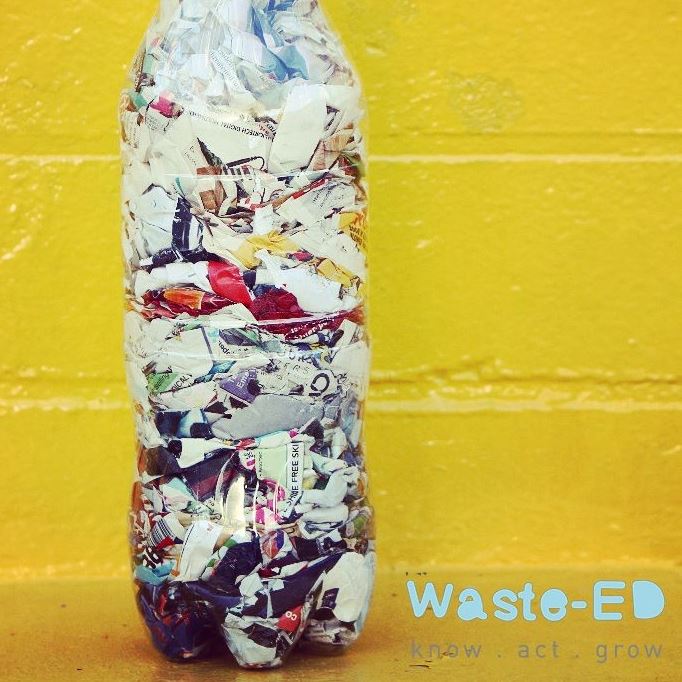
21 Dec The Ecobrick – Message In A Bottle
Candice Mostert – Waste-ED Founder
Simply a plastic bottle stuffed with non-recyclable materials, the ecobrick has become a symbol of man’s relationship with nature in the last century. Each brick tells a personal story of consumption, industry and the systems we have in place to deal with a fast-growing economy.
Alone, I make roughly 1 ecobrick a month. You can fit up to 2 black bags of non- recyclables into one 2L bottle! I have been stuffing for 6 years now and so I have been able to track my own consumption, which has added up to roughly 144L (or 144 bags) of material that was otherwise deemed to lay waste.
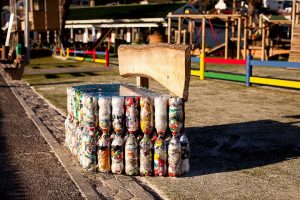
This was a very powerful realisation for me; before that, my waste honestly hadn’t even crossed my mind, let alone if it was recyclable or where it ended up. My thoughts literally didn’t go past the bin! I was so inspired by the bottle brick I started a project called Waste-ED and have since used the last 6 years to try better understand the challenges we are facing, implement solutions locally that can transform our future while collecting and building ecobrick structures all along the way!
It’s not new that the things we produce and consume are having a profound impact on our very fragile and unique ecosystem as well as our people – you just have to scroll down Facebook for a few minutes to see a story of a whale or entire community facing the wrath. When you start stuffing a bottle to make an ecobrick there are a few things you start to reconsider; the idea of convenience, transportation and waste management facilities just to name a few.
Long distance transportation of our goods and our need for ‘on the go’ are just two reasons that products are being so heavily packaged and chemically altered. We also have to understand that in many countries the goods came before the management systems and this is why so many have been unable to deal with the fast-growing influx. Unfortunately, not everything is recyclable and even if it is – very often it doesn’t make it to be processed. Luckily these downfalls can be used as an opportunity to redesign production, packaging and process facilities so that they can imitate natures cyclical system where immediately one’s waste becomes useful for something else – better yet, no packaging creates no waste!
This concept of product and system change is vital but it is also a longer-term solution that starts with what we buy. The ecobrick offers a short-term, temporary solution to deal with centuries of past waste and the items we continue to produce today.
The ecobrick is so much more than a consumption wake-up call; for about 15 years now it has helped us provide much-needed structures worldwide too. You can track the birth of the bottle brick to Susana Heisse, an environmental activist from Guatemala. In the ecobrick community, she is known as the grandmother or queen of the ecobrick! She came up with an idea that used trash as its own container. She got children in the village to pick up wrappers and stuff them into bottles that they’d exchange for school supplies. She took the bottles and used them as building blocks embedded in adobe structures. This became particularly important after Hurricane Stan in 2005, when so many people had to rebuild their homes. Since then the brick has inspired many individuals and whole communities to re-look at their items being thrown away.
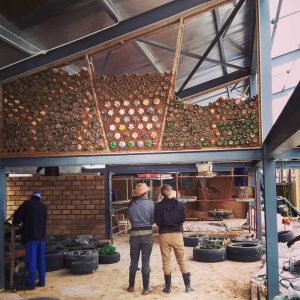
One of the ecobricks best properties is its insulation, allowing the building to keep cool during the day and warm at night. The conventional building uses plastic insulation too, it just comes in the form of what we recognise as a kind of foam. The ecobrick is best used in natural clay building (cob/adobe) and Waste-ED doesn’t settle for anything less. This way the bottle is preserved for future use (cement leaves bricks mostly unusable and is one of the worlds highest contributors to greenhouse gases), theclay acts as a fire retardant and prevents any chemicals from leaching, which is really important considering how toxic some of our current housing materials can be.
My favourite thing about the brick is that it’s free; the materials and techniques to make a clay/ecobrick structure can be accessed by anyone needing a home or toilet block if they have clay nearby, and in this country that’s almost 60% of us. In fact, the bottle brick is just one of many alternative ways one can build structures that empowers the individual, community and the environment. Tyres are used to make weight bearing, bullet and earthquake-proof structures, sandbags housing is also more common than you would think and even straw bales can be used to create strong, aesthetically pleasing structures.
With both products and housing, the solution is “get local”. The ecobrick is not for everyone and solutions locally will vary from place to place. Ultimately ecobricks need to be phased out with their single-use friends but it has the unique ability to clean up communities and more than that, trigger something within us that connects us with nature and the materials we once found valueless. It gives us an opportunity to open our world to something greater – a future we can be proud to call home.
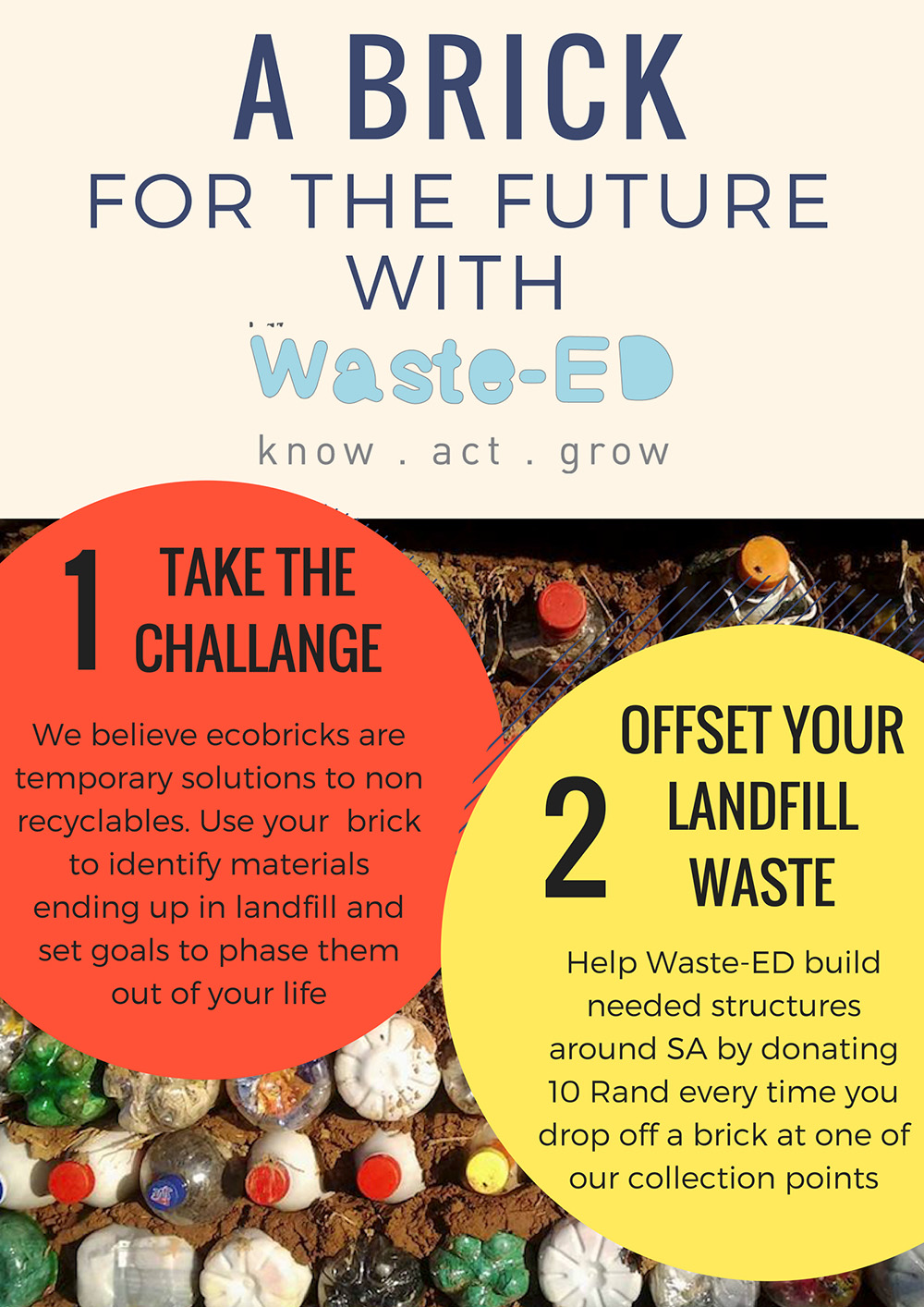
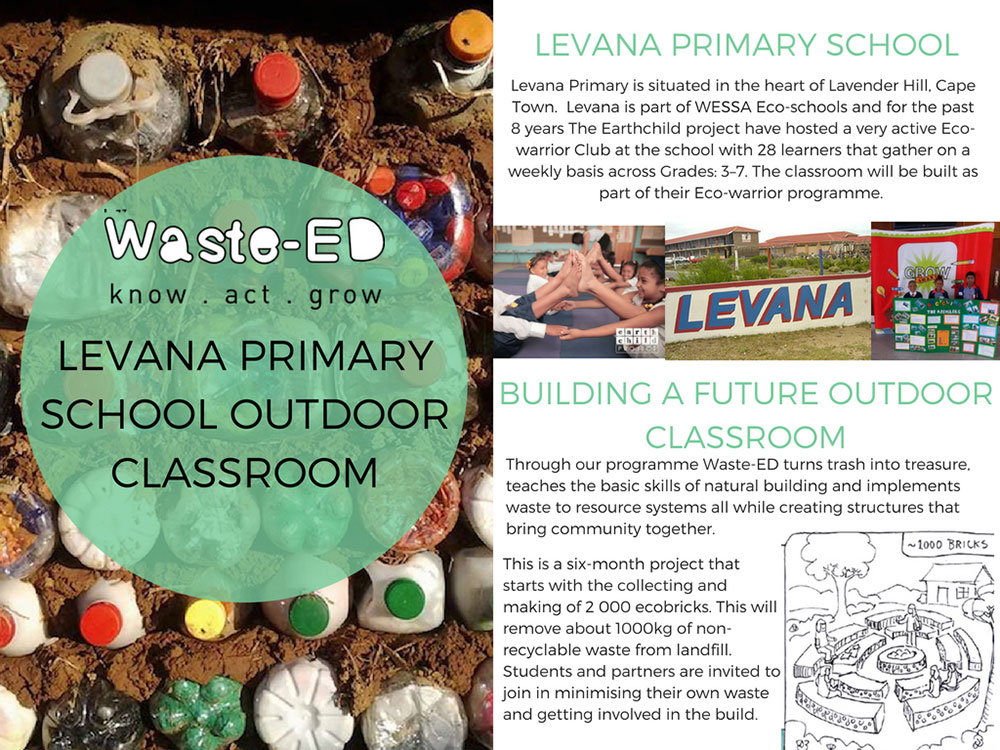
Collection point info: Levana School



Lyn
Posted at 12:51h, 07 JanuaryI thought this was a brilliant idea, and started putting my non-recycled goodies into 2L bottles, until I had a couple, and
then what?? what do you do with them?? if I am are not going to build myself.
Kerry Haarhof
Posted at 17:05h, 22 JanuaryHey Lyn! So great to hear that you are making your own Eco-bricks. Waste-ED’s facebook page has a list of drop-off points where you can take your eco-bricks to and they will then use them for their building projects 🙂
Ian dommisse
Posted at 21:58h, 13 FebruaryBeautifully written Candice
Pingback:Meet Khaya, our Faithful to Nature Ambassador - Faithful to Nature Natural and Organic Blog
Posted at 15:01h, 13 March[…] Eco-bricking is the perfect way to dispose of your unrecyclables, because you can give your bricks to Waste-Ed (Faithful to Nature is a drop off point) and they will use it for building something awesome. […]
Pingback:Why I Gave Up Plastic For Lent - Faithful to Nature Natural and Organic Blog
Posted at 20:11h, 13 March[…] Not sure what to do with your plastic waste? Have a look at this incredible solution: The Eco Brick. […]
Pingback:Robyn Gets Personal About Trash - Faithful to Nature Natural and Organic Blog
Posted at 15:20h, 16 July[…] not a complete solution to the fact that our planet is drowning in plastic; these babies are mind-blowingly elegant in their simplicity and have the potential to make a significant […]
Pingback:Robyn Talks More Trash: New Products for a Waste-Less Journey - Faithful to Nature Natural and Organic Blog
Posted at 13:49h, 24 August[…] certainly be schooled by him on why that sucks. I’ve almost 100% weaned myself off Woolies, we eco-brick and grow most of our own greens. And yet our little family of four humans and two big dogs is still […]
Pingback:Faithful to Nature Eco Awards: NOMINEES - Faithful to Nature Natural and Organic Blog
Posted at 12:40h, 15 October[…] Waste-Ed […]
Pingback:The Environmentalist – You Inspire Me
Posted at 13:40h, 22 October[…] The Ecobrick – Message In A Bottle […]
Pingback:Sun Printing: Team Up with Mother Nature for this Easy DIY - Faithful to Nature Natural and Organic Blog
Posted at 11:11h, 24 October[…] blow away and can be re-used time and again. The cut off bits and letters can then go into an eco-brick of […]
Claire Cocks
Posted at 15:59h, 19 NovemberHi Candice,
I was wondering if there is a drop off place in KZN?
FE Botha
Posted at 15:56h, 23 AprilBottle bricks (filled with sand) are being used to build homes in Zwelihle, Hermanus.
Eileen morrison
Posted at 13:35h, 15 DecemberHi there. Because I live alone & also because I don’t drink a lot of cool-drinks, & try to steer clear of buying plastic bottles, I wouldn’t end up making many eco-bricks. However, I am more than happy to drop non-re-cyclable materials where they can be used for this purpose. I main gripe if polystyrene! If someone can please point me in the direction where I can take this kind of material? I live in Fairlands, Johannesburg. Thanks. Eileen
Joesph Camera
Posted at 15:20h, 27 FebruaryThanking U fr this INTERESTING and Informative article..!